Day 1 - Our Arrival in Dublin
Day two of our expedition is actually day one of the formal tour. After gathering from breakfast, we boarded our Coach at 9am sharp. Unfortunately, we were short four of our party, including my dear daughter, Amy, who arrived only that morning from the States. Their planes arrived at about the time we departed the hotel and, with the morning business traffic, they were not able to rendezvous with us until noon.
Here I must admit that my intelligence from the previous day was in error.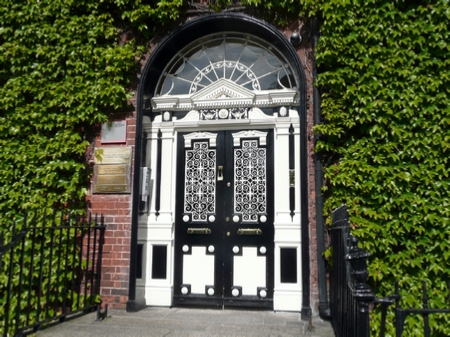 The church that I had reported as St. Patrick’s was not. It’s correct identity I do not know, though perhaps it was St. Micah. It was obvious that I had erred as we visited St. Patrick’s on this day and how I could mistake the two I do not know.
The church that I had reported as St. Patrick’s was not. It’s correct identity I do not know, though perhaps it was St. Micah. It was obvious that I had erred as we visited St. Patrick’s on this day and how I could mistake the two I do not know.
The day began with a general familiarity with the City of Dublin. Dublin is both the capital and the largest city in the Republic of Ireland and is situated near the midpoint of the east coast. Because of its location and access to the Liffey River, the settlement of Dublin dates back to the first century BC. The area was subsequently settled by the Vikings and, with the Norman invasion of 1171, became a city. In 1923, following the independence of the Republic of Ireland, it became the capital. In the 17th century, Dublin experienced rapid growth and, consequently, it is dominated by Georgian architecture, Much of this growth was spurred by the founding of the Guinness brewery in 1759, While Edinburgh, Scotland, is built almost entirely of stone, Dublin uses a combination of brick and stone in the Georgian style.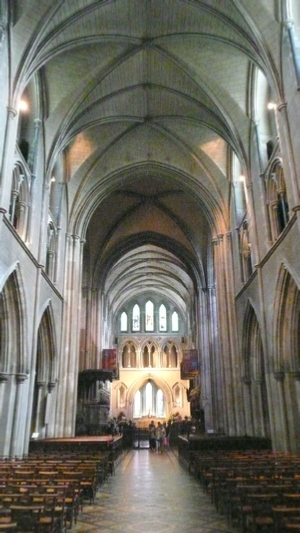
We next stopped to visit St. Patrick’s Cathedral or The National Cathedral and Collegiate Church of St. Patrick, Dublin, as it is formally named. A church has stood at the site of the present day cathedral since the fifth century. The Normans built a stone church on this site in 1191. St. Patrick is said to have baptized converts to Christianity at a well that once existed in the park alongside the Cathedral. The Cathedral has played a central part in the lives of the Irish including the first performance of Handel’s Messiah in 1742. It currently is hosting a tribute to Irish who have fallen in wars on foreign and domestic soils. This includes a display of regimental flags that fly over the Choir.
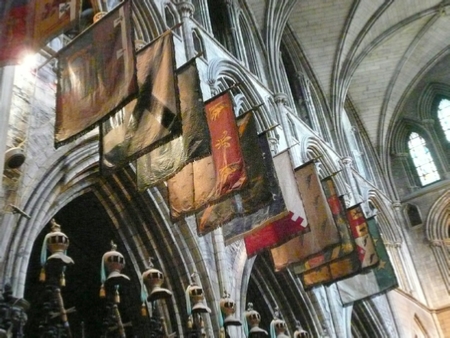 Upon leaving St. Patrick’s, we continued our evaluation of Dublin. This took us to Phoenix Park, At 1760 Acres, Phoenix Park is the largest enclosed urban park in Europe. It is not only the home of over 450 fallow deer, but also of the US Embassy and the “Irish Whitehouse”, home of the President of Ireland.
Upon leaving St. Patrick’s, we continued our evaluation of Dublin. This took us to Phoenix Park, At 1760 Acres, Phoenix Park is the largest enclosed urban park in Europe. It is not only the home of over 450 fallow deer, but also of the US Embassy and the “Irish Whitehouse”, home of the President of Ireland.
We next dropped most of our troops off on Grafton St. and I proceeded back to the hotel to finally meet up with Amy and the remaining of our entourage. After grabbing a quick smoked salmon sandwich and half pint of Guinness in the bar, we met back up with our forces at Trinity College. Our objective this afternoon was to scope out the ancient manuscript known as The Book of Kells. The Book of Kells was written over 1000 years ago when the Irish church was largely a monastic society. At this time many monks lived in communities devoted to the study of God’s word and the spreading of the message of the life of Christ through gospel books.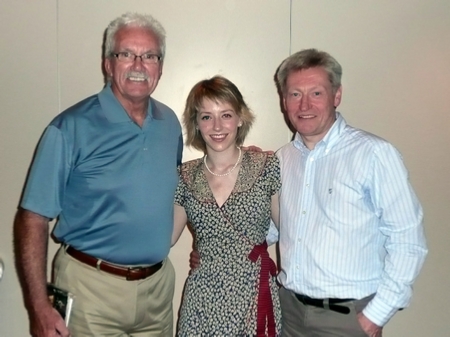
As one such book, The Book of Kells contains a lavishly decorated copy of the four gospels in Latin. The Book was probably produced early in the 9th century by the monks of Iona, an island off the west coast of Scotland. When Iona was attacked by Vikings in 806 AD, the monks moved to Kells, County Keath, in Ireland, hence the name. (For those that followed my travels to Scotland in ‘08, you will recall my trip to Iona.) The Book of Kells is considered to be not only one of the finest works of its type, but also a national treasure of Ireland. Unfortunately, pictures are not permitted within The Old Library at Trinity College.
Trinity College Library is only one of a few libraries that has the right to claim a free copy of all books published in Britain and Ireland. It houses over three million volumes in eight buildings.
After dinner we were entertained by the well known uillean pipe player and his daughter, Aoife, who accompanied him on the fiddle and with her sweet vocals. >The uillean pipes means “elbow” pipes, so named because they are played by pumping a bellows attached to the elbow that inflates the bag. You have heard the uillean pipes in many movies including Braveheart and Titanic. This proved to be truly one of the most entertaining evenings I have experienced. With these Irish tunes in my head, I went happily to my evening’s bed.
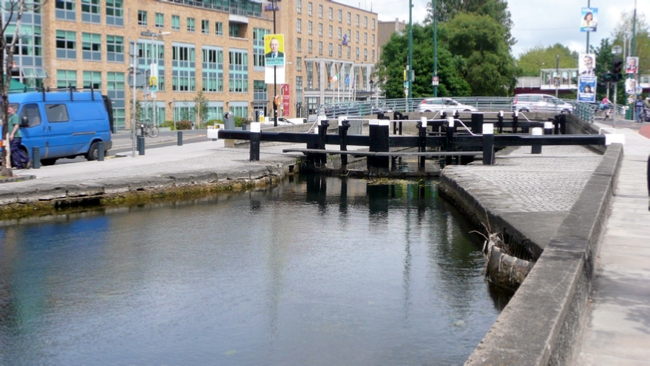
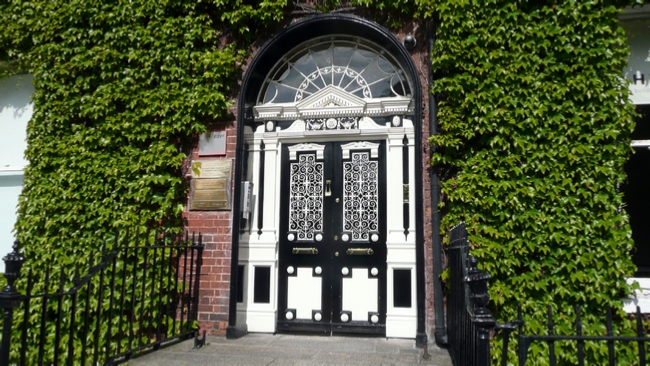
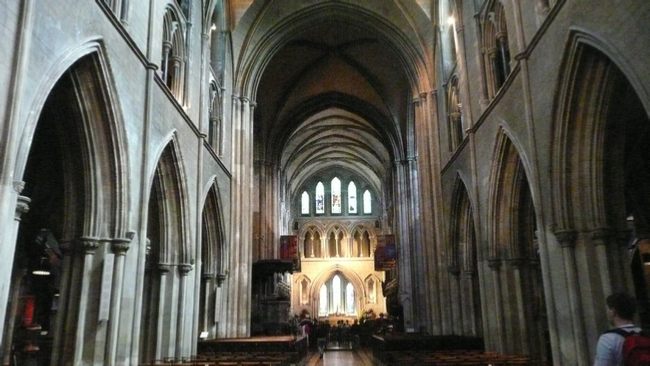
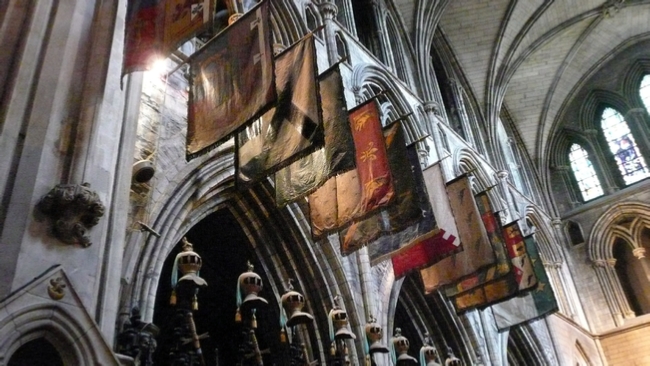
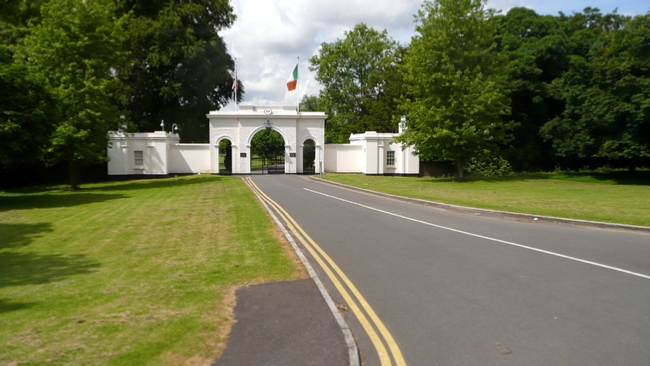
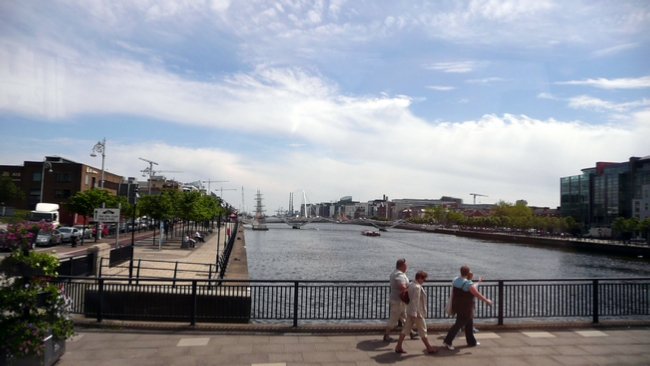
Here I must admit that my intelligence from the previous day was in error.
The day began with a general familiarity with the City of Dublin. Dublin is both the capital and the largest city in the Republic of Ireland and is situated near the midpoint of the east coast. Because of its location and access to the Liffey River, the settlement of Dublin dates back to the first century BC. The area was subsequently settled by the Vikings and, with the Norman invasion of 1171, became a city. In 1923, following the independence of the Republic of Ireland, it became the capital. In the 17th century, Dublin experienced rapid growth and, consequently, it is dominated by Georgian architecture, Much of this growth was spurred by the founding of the Guinness brewery in 1759, While Edinburgh, Scotland, is built almost entirely of stone, Dublin uses a combination of brick and stone in the Georgian style.
We next stopped to visit St. Patrick’s Cathedral or The National Cathedral and Collegiate Church of St. Patrick, Dublin, as it is formally named. A church has stood at the site of the present day cathedral since the fifth century. The Normans built a stone church on this site in 1191. St. Patrick is said to have baptized converts to Christianity at a well that once existed in the park alongside the Cathedral. The Cathedral has played a central part in the lives of the Irish including the first performance of Handel’s Messiah in 1742. It currently is hosting a tribute to Irish who have fallen in wars on foreign and domestic soils. This includes a display of regimental flags that fly over the Choir.
We next dropped most of our troops off on Grafton St. and I proceeded back to the hotel to finally meet up with Amy and the remaining of our entourage. After grabbing a quick smoked salmon sandwich and half pint of Guinness in the bar, we met back up with our forces at Trinity College. Our objective this afternoon was to scope out the ancient manuscript known as The Book of Kells. The Book of Kells was written over 1000 years ago when the Irish church was largely a monastic society. At this time many monks lived in communities devoted to the study of God’s word and the spreading of the message of the life of Christ through gospel books.
As one such book, The Book of Kells contains a lavishly decorated copy of the four gospels in Latin. The Book was probably produced early in the 9th century by the monks of Iona, an island off the west coast of Scotland. When Iona was attacked by Vikings in 806 AD, the monks moved to Kells, County Keath, in Ireland, hence the name. (For those that followed my travels to Scotland in ‘08, you will recall my trip to Iona.) The Book of Kells is considered to be not only one of the finest works of its type, but also a national treasure of Ireland. Unfortunately, pictures are not permitted within The Old Library at Trinity College.
Trinity College Library is only one of a few libraries that has the right to claim a free copy of all books published in Britain and Ireland. It houses over three million volumes in eight buildings.
After dinner we were entertained by the well known uillean pipe player and his daughter, Aoife, who accompanied him on the fiddle and with her sweet vocals. >The uillean pipes means “elbow” pipes, so named because they are played by pumping a bellows attached to the elbow that inflates the bag. You have heard the uillean pipes in many movies including Braveheart and Titanic. This proved to be truly one of the most entertaining evenings I have experienced. With these Irish tunes in my head, I went happily to my evening’s bed.

 To Day 3 -
To Day 3 -